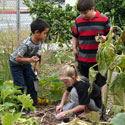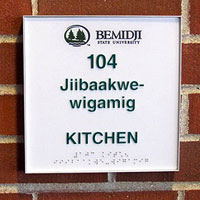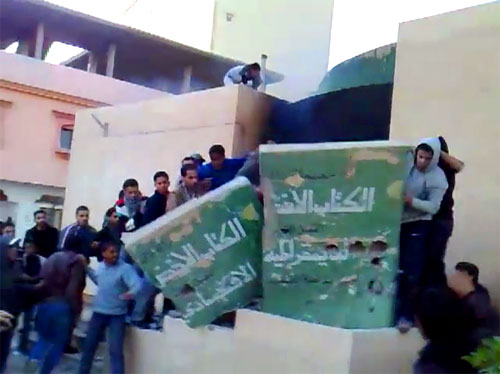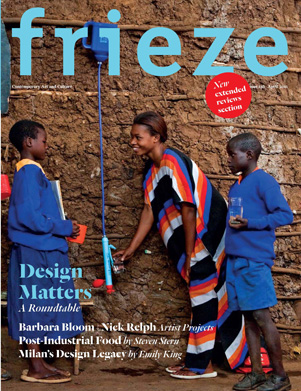Found 3599 matches from 1,400 records in about 0.1303 seconds for twitter or is or lazy.
David Biello on the daunting physical logistics of scaling up green energy:
“It’s not just a matter of making the necessary equipment, it’s also a question of finding the space for it. A coal-fired power plant produces 100 to 1,000 watts per square meter, depending on the type of coal it burns and how that coal is mined. A typical photovoltaic system for turning sunlight into electricity produces just 9 watts per square meter, and wind provides only 1.5 watts per square meter.
The challenge is worse for smaller countries: the United Kingdom would have to cover its entire landmass with wind turbines to provide enough electricity for the current Briton’s average consumption — roughly 200 kilowatt-hours per day, according to MacKay, the Cambridge expert.”
Few visuals capture the spirit of regime change as much as toppling the monuments of the previous regime. In the case of Libya, revolutionary protesters on YouTube topple a monument to Muammar al-Qaddafi’s revolutionary Green Book.
The future is unwritten!

From an article on Brenda Brathwaite and her game design:
“[Train] unfolds atop a shattered window. Three model train tracks run diagonally across the broken glass. Game pieces include two stacks of cards, a black typewriter holding the rules, 60 yellow wooden pawns, and six gray model boxcars.
Each turn, players can roll a die and choose to advance their boxcar or load it with pawns; alternatively, they can use a card to speed or slow a boxcar’s progress. Brathwaite’s goal, she says, was to make a game about complicity.…
At that point, Train had not formally revealed its subject, and Jon and the others played as though it were a normal board game, trying to outrace each other. When Rob was the first to move a boxcar to the end of the line, he followed the rules and drew a Terminus card. Train’s theme was no longer hidden. The card said ‘Dachau.’
…
Train is the third title in a series of six non-digital games she calls ‘The Mechanic Is The Message.’ The series was sprung one afternoon in 2007, when her daughter Maezza followed a thoughtless rehash of the day’s school lesson about the Middle Passage by asking to play a game. Brathwaite invented a game on the spot. She had Maezza spend half an hour painting wooden pawns and grouping them into families. Brathwaite then scooped the pawns at random, placed them on an index card, and explained the rules: You have 10 turns to cross the ocean and 30 units of food; each turn you must roll the die and use that much food. After a series of high rolls, Maezza looked to her mother: ‘Mommy, we’re not going to make it.’
…
[Brathwaite] decided to make games about five more ‘difficult’ subjects: Cromwell’s conquest of Ireland, the Holocaust, the Trail of Tears, illegal immigration, and Haitian poverty. Her goal was more than ‘blast-the-Nazis fun.’ ‘I wanted to do a design exercise to see if you could use game mechanics to express difficult subjects,’ Braithwaite says. ‘Every single atrocity, every single migration of people—there was a system behind it. If you can find that system, you can make a game about it. All games are, is systems.’”
Ogle Earth runs down a brief list of ways Google Earth and the availability of satellite imagery in recent years have fueled class resentment and conflict in Bahrain, Iran, Iraq, Israel, Saudi Arabia, Sudan, Syria, Tunisia, and Yemen.
Leading the list are dramatic visualizations comparing the overcrowded living conditions of the Shiite majority in Bahrain with the palaces, estates, and private islands of the ruling families. After the country’s ISPs were ordered to block access to Google Earth’s imagery in 2006, this PDF of annotated screencaps illustrating the spatial inequities circulated widely by email.

are sitting at a table. In the middle of the table is a plate with a dozen cookies on it. The CEO reaches across and takes 11 cookies, looks at the tea party member and says, “Watch out for that union guy. He wants a piece of your cookie.”
Saw this making the rounds on Facebook and other forums — so much so, that I was unable to track down the source. It glosses over a bit, but does a good job telling a powerful story in simple, visual terms. A nice bit of information design!
 Mud teaches gardening on a massive scale — across the LA County Unified School District. He raises funds, de-paves urban lots, works with kids, teaches teachers, and Twitters it all. This guy is busy! So it seems appropriate that this interview takes place via Twitter.
Mud teaches gardening on a massive scale — across the LA County Unified School District. He raises funds, de-paves urban lots, works with kids, teaches teachers, and Twitters it all. This guy is busy! So it seems appropriate that this interview takes place via Twitter. “The Society of Typographic Aficionados is organizing Font Aid V — a collaborative project uniting the typographic and design communities with a goal of raising funds to expedite relief efforts after the recent earthquake and tsunami in Japan.” Send in a glyph to be included in a font for sale. The deadline is next Friday: March 25, 2011. Previously: Font Aid IV
“The Society of Typographic Aficionados is organizing Font Aid V — a collaborative project uniting the typographic and design communities with a goal of raising funds to expedite relief efforts after the recent earthquake and tsunami in Japan.” Send in a glyph to be included in a font for sale. The deadline is next Friday: March 25, 2011. Previously: Font Aid IVIn the introduction to Seeing Like a State: How Certain Schemes to Imporve the Human Condition Have Failed, James C. Scott writes:
Originally, I set out to understand why the state has always seemed to be the enemy of “people who move around,” to put it crudely. In the context of Southeast Asia, this promised to be a fruitful way of addressing the perennial tensions between mobile, slash-and-burn hill peoples on one hand and wet-rice, valley kingdoms on the other. The question, however, transcended regional geography. Nomads and pastoralists (such as Berbers and Bedouins), hunter-gatherers, Gypsies, vagrants, homeless people, itinerants, runaway slaves, and serfs have always been a thorn in the side of states. Efforts to permanently settle these mobile peoples (sedentarization) seemed to be a perennial state project—perennial, in part, because it so seldom succeeded.
The more I examined these efforts at sedentarization, the more I came to see them as a state’s attempt to make a society legible, to arrange the population in ways that simplified the classic state functions of taxation, conscription, and prevention of rebellion. Having begun to think in these terms, I began to see legibility as a central problem in statecraft. The premodern state was, in many crucial respects, partially blind; it knew precious little about its subjects, their wealth, their landholdings and yields, their location, their very identity. It lacked anything like a detailed “map” of its terrain and its people. It lacked, for the most part, a measure, a metric, that would allow it to “translate” what it knew into a common standard necessary for a synoptic view. As a result, its interventions were often crude and self-defeating.
It is at this point that the detour began. How did the state gradually get a handle on its subjects and their environment? Suddenly, processes as disparate as the creation of permanent last names, the standardization of weights and measures, the establishment of cadastral surveys and population registers, the invention of freehold tenure, the standardization of language and legal discourse, the design of cities, and the organization of transportation seemed comprehensible as attempts at legibility and simplification. In each case, officials took exceptionally complex, illegible, and local social practices, such as land tenure customs or naming customs, and created a standard grid whereby it could be centrally recorded and monitored.
Standarization of script seems to fit right in line with this. Not just under the pretense of forging national identity, citizen-ship, encouraging citizens to read and participate in the State, but enabling the State to read its citizens.
The international art magazine frieze put social design on the cover of this month’s edition. The cover story is a roundtable discussion I participated in about design and social responsibility. It’s a fairly critical look, touching on ethics, design education, and public policy. Issue #138 is on the stands now, or you can read the discussion online here.

Signs in Bemidji, Minnesota used to read “No Indians Allowed.” Now local businesses increasingly announce their facilities in both English and Ojibwe.
Racism and social exclusion have a long history in the town, but as Tanya Lee writes, a 2005 proposal to voluntarily incorporate Ojibwe words on public signage is having a growing impact:
The idea came in part from Hawaii, where [Michael] Meuers had lived for a year in the 1960s. On the islands, he recalled, native language and culture are a part of everyday life for everyone, as the familiarity with words such as mahalo, luau, aloha, lei and hula prove. On restroom doors, the words men and women are displayed in English and in Hawaiian.
In 2005, a student at Red Lake High School, a school for Red Lake students run by the state of Minnesota, opened fire on the campus with a shotgun and a semiautomatic pistol, killing seven.
“The next day, I was talking to the city manager and noticed a Red Lake flag on a shelf,” Meuers said. “I was working for the tribe at that point and I suggested the city fly the flag. The Red Lake flag flew at half-staff outside City Hall for a week. I never heard so many positive comments about Bemidji. It was the people of the city saying, ‘Bemidji is crying for the Red Lake babies too.’ ”
This prompted Meuers to take his simple idea about the bathroom signs to Shared Visions, a community organization dedicated to addressing the issues of racial disparity and bias. Rachelle Houle served with Meuers on the Cultural Understanding and Respect Committee, and together they set the goal of placing restroom signs in both Ojibwe and English in 20 businesses within a year. Meuers volunteered to pay for the signs.…
“Michael and I both feel a change happening here,” Houle said. “For so long, the Ojibwe culture and people have not been respected here. This is a way of saying, ‘You are valuable.’ It’s a way of showing respect and making people welcome in Bemidji.”…
[Dr. Anton Treuer, professor of Ojibwe at Bemidji State University] says the university has received many calls and e-mails about how to replicate the [universty’s signage] program, and he believes it can serve as a template for other tribes. “We were taking our signs around town when we started,” Meuers said, “and now people are coming to us, not only from the U.S. but also from Canada.”
page 1 2 3 4 5 6 7 8 9 10 11 12 13 14 15 16 17 18 19 20 21 22 23 24 25 26 27 28 29 30 31 32 33 34 35 36 37 38 39 40 41 42 43 44 45 46 47 48 49 50 51 52 53 54 55 56 57 58 59 60 61 62 63 64 65 66 67 68 69 70 71 72 73 74 75 76 77 78 79 80 81 82 83 84 85 86 87 88 89 90 91 92 93 94 95 96 97 98 99 100 101 102 103 104 105 106 107 108 109 110 111 112 113 114 115 116 117 118 119 120 121 122 123 124 125 126 127 128 129 130 131 132 133 134 135 136 137 138 139 140 141 142 143 144 145 146 147 148 149 150 151 152 153 154 155 156 157 158 159 160 161 162 163 164 165 166 167 168 169 170 171 172 173 174 175 176 177 178 179 180 181 182 183 184 185 186 187 188 189 190 191 192 193 194 195 196 197 198 199 200 201 202 203 204 205 206 207 208 209 210 211 212 213 214 215 216 217 218 219 220 221 222 223 224 225 226 227 228 229 230 231 232 233 234 235 236 237 238 239 240 241 242 243 244 245 246 247 248 249 250 251 252 253 254 255 256 257 258 259 260 261 262 263 264 265 266 267 268 269 270 271 272 273 274 275 276 277 278 279 280 281 282 283 284 285 286 287 288 289 290 291 292 293 294 295 296 297 298 299 300 301 302 303 304 305 306 307 308 309 310 311 312 313 314 315 316 317 318 319 320 321 322 323 324 325 326 327 328 329 330 331 332 333 334 335 336 337 338 339 340 341 342 343 344 345 346 347 348 349 350 351 352 353 354 355 356 357 358 359 360
[ Back ]
[ Next ]




